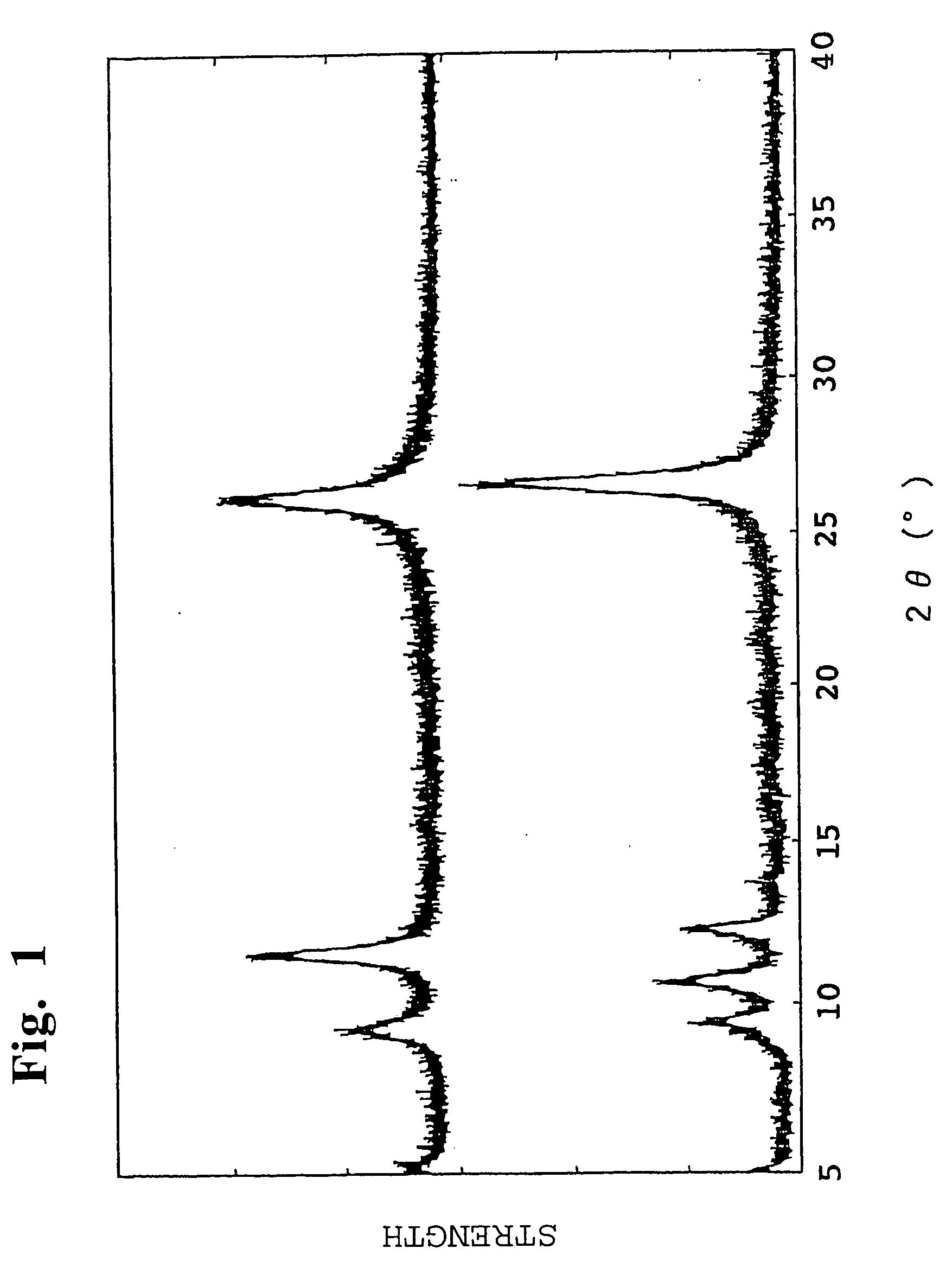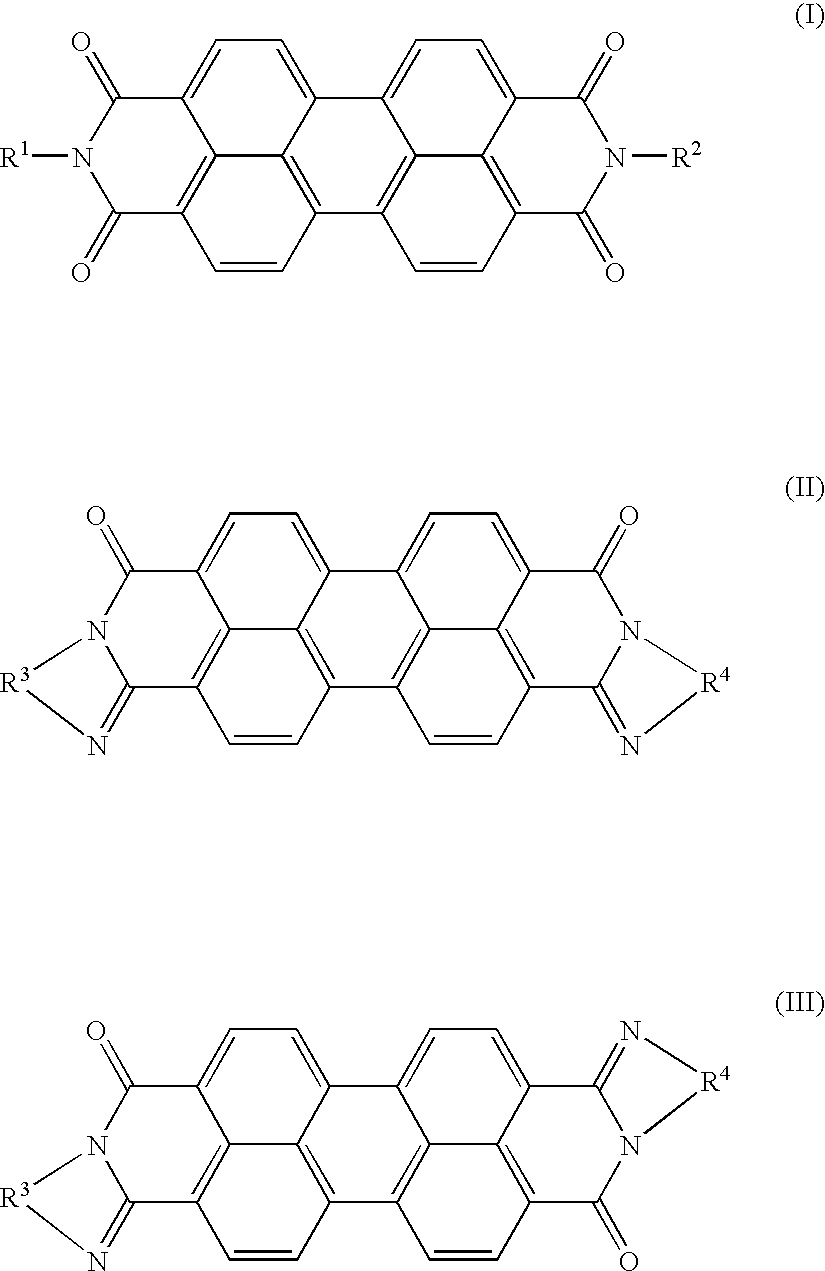Black perylene pigment and process for producing the same
a technology of black perylene and pigment, applied in the field of black perylenebased pigment, can solve the problems of poor handling property and workability, difficult to use such carbon black in applications requiring high electrical resistance, and small particle size of carbon black, etc., to achieve excellent heat resistance, excellent blackness, excellent weather fastness
- Summary
- Abstract
- Description
- Claims
- Application Information
AI Technical Summary
Benefits of technology
Problems solved by technology
Method used
Image
Examples
example 1
The compound represented by the formula (I) wherein R1 and R2 both are butyl group, was heat-treated at 500° C. for one hour in an argon gas atmosphere in a cylindrical heating furnace. The resultant product was pulverized by a ball mill, thereby obtaining a black pigment.
As a result of measuring the X-ray diffraction diagram of the obtained black pigment, as shown in FIG. 1, there was observed the diffraction diagram (as shown in an upper part of FIG. 1), which was different from the diffraction diagram (as shown in a lower part of FIG. 1) of the starting compound. Therefore, it was conformed that the molecular arrangement of the obtained black pigment was changed from that of the starting compound. Also, as a result of measuring the light absorption spectrum of the obtained black pigment, as shown in FIG. 2, there was observed the absorption spectrum (indicated by the solid line in FIG. 2) exhibiting a broad absorption band covering a still broader visible light region as compa...
example 2
The same procedure as defined in Example 1 was conducted except that the compound represented by the formula (I) was replaced with the compound represented by the formula (II) wherein R1 and R2 both are phenylene group, thereby producing a black pigment. Essential production conditions are shown in Table 1, and various properties of the obtained black pigment are shown in Table 2. As a result of measuring the X-ray diffraction diagram of the obtained black pigment, there was observed the diffraction diagram different from that of the starting material. Therefore, it was confirmed that the molecular arrangement of the obtained black pigment was changed from that of the starting material. Also, as a result of measuring the heat resistance, it was confirmed that the obtained black pigment was thermally stable.
PUM
| Property | Measurement | Unit |
|---|---|---|
| temperature | aaaaa | aaaaa |
| temperature | aaaaa | aaaaa |
| tinctorial strength | aaaaa | aaaaa |
Abstract
Description
Claims
Application Information
 Login to View More
Login to View More - R&D
- Intellectual Property
- Life Sciences
- Materials
- Tech Scout
- Unparalleled Data Quality
- Higher Quality Content
- 60% Fewer Hallucinations
Browse by: Latest US Patents, China's latest patents, Technical Efficacy Thesaurus, Application Domain, Technology Topic, Popular Technical Reports.
© 2025 PatSnap. All rights reserved.Legal|Privacy policy|Modern Slavery Act Transparency Statement|Sitemap|About US| Contact US: help@patsnap.com



